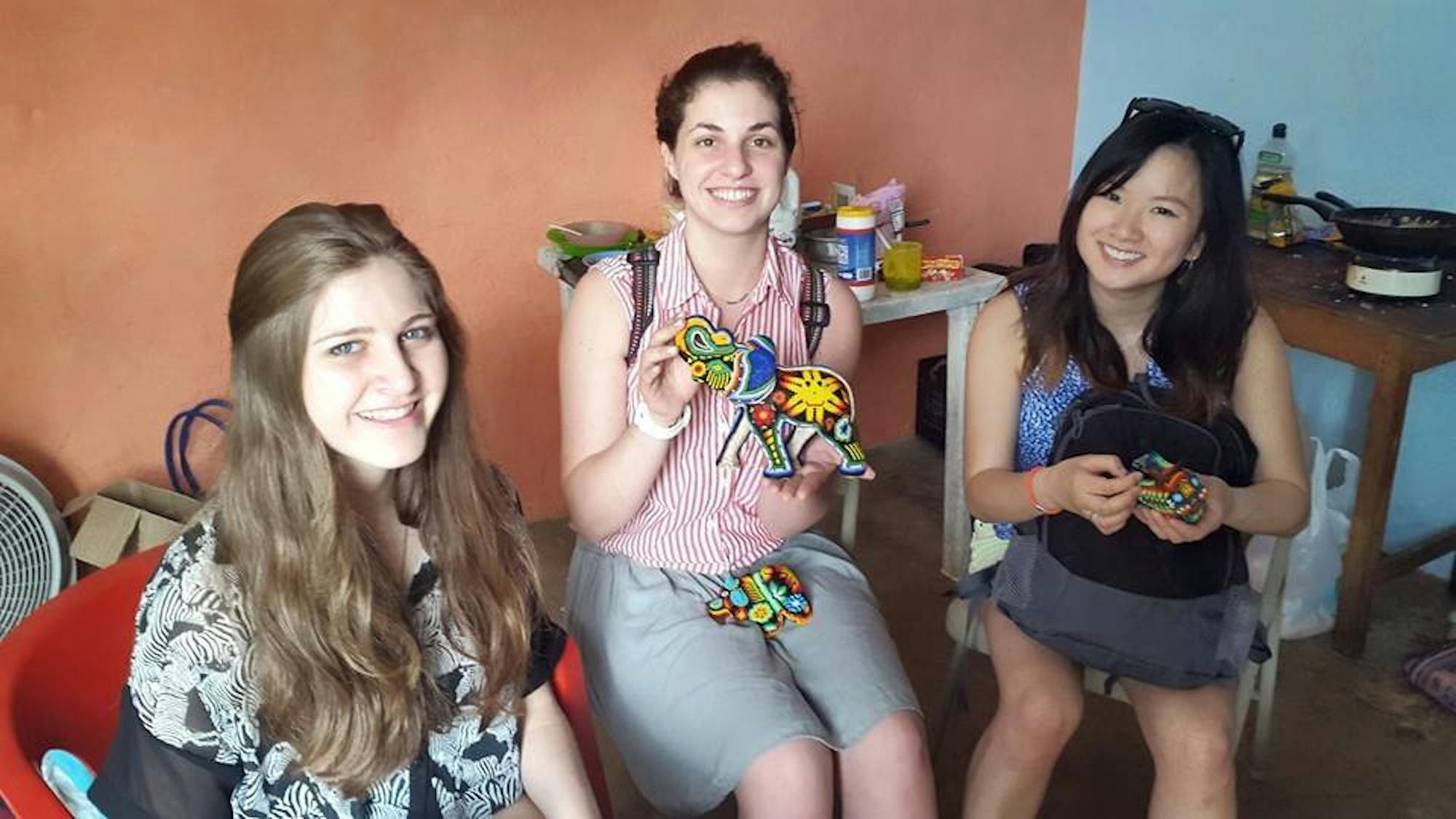A group of students spent their spring break on an Experimental College-led trip in Bucerias, Mexico. The goal of the trip was to give students a better understanding of microfinance.
The trip's attendees included sophomores Lara LoBrutto and Sara Pearce-Probst and senior Gabriella Zoia, who is also an assistant news editor at the Daily. The students were accompanied by Adam Grenier, lecturer in the Experimental College, and Elly Rohrer (LA ’11), who is the director of Human Connections, a nonprofit dedicated to leading educational and academic tours for college students.
According to Grenier, Rohrer pitched the idea for the trip. She expressed interest in organizing a microfinance tour for Tufts students.
“[Last fall] we started building out what the itinerary would look like for Tufts students, with a focus on microfinance, which is what I teach here,” Grenier said. “We’d basically be embedded with three different microfinance institutions while we’re there for the week.”
Grenier explained that microfinance can be defined as financial services for the poor.
“[Microfinance] is most commonly connected with the distribution of micro-loans -- that’s how it was popularized -- but it entails a lot more than loans. It’s about loans, savings programs, insurance programs, education … financial education,” he said. “It’s much bigger than just loans.”
Financial services, including loans, are relatively easy to obtain in the United States, Grenier said, where someone in need of a loan to start a business can request one from a bank. In contrast, he noted that microfinance operates at a more informal level.
“These [microfinance] institutions are able to target those that don’t have easy access to the commercial [and] formal sector,” he said.
In Bucerias, the students were able to interact with clients of microfinance services and learn how microfinance loans work in the culture of the local community, Grenier said.
Students were able to get hands-on experience with several aspects of microfinance, including meeting loan clients, members of microfinance institutions, people in remittance programs and people involved in lending circles, as well as more recreational activities, he said.
“[Lending circles] are even more informal than the traditional microloans,” Grenier said. “These are circles that are established in villages [and are] very locally built.”
Pearce-Probst said she was extremely pleased with the outcome of the experience, emphasizing that the trip helped her gain an understanding of microfinance that she could not have gotten through her engineering studies.
“Learning about what microfinance actually is was a highlight, but more than that, the most interesting, fun and also awkward part to me was actually visiting people’s homes,” she said. “You don’t get that just going as a tourist by yourself ... to really meet these people and have them welcome you into their homes is a very special experience.”
She added that since Rohrer had previously established connections with the people they interacted with, the visits felt more comfortable despite the personal nature of the financial questions being discussed.
Pearce-Probst believes that the trip was also valuable in that she was able to find a connection to her classroom studies at Tufts.
“I wasn’t expecting anything related to my studies when I went … but the community center was by far my favorite place because they combined social entrepreneurship with engineering: How they designed the building, how they made it energy efficient and environmentally friendly and combined that with strong community building and bringing together people of American descent and Mexican descent,” Pearce-Probst said.
LoBrutto added that the trip enabled her to learn about the importance of communities in Mexican microfinance.
"I learned that the reason for microfinance's relative success in Mexico is the existence of strong communities," she told the Daily in an email. "Speaking to real-life microfinance participants was a hundred times more valuable than learning about it in a classroom."
In addition, LoBrutto explained that the stories she heard from the residents of Bucerias left a major impression on her.
"The families we visited had incredible stories to share, from Leonarda's perseverance as a single mom to Don Carmelo's rise from an orphan to a successful restaurant owner raising 10 children," she said. "They will stick with me for a long time to come."
These experiences allowed LoBrutto to gain a new perspective on microfinance and its related questions, she noted, as well as stimulating her interest in future career paths.
"I believe that the discoveries and realizations that this trip facilitated will have an invaluable impact on my future," she said.
Although this trip is the first of its kind, Grenier hopes that similar trips can be made, perhaps on an annual basis.
Students embark on microfinance trip through ExCollege course

From left to right: Lara LoBrutto, Gabriella Zoia and Sarah Pearce-Probst admire the artisan work of Human Connections client Leonarda, especially the Tufts Jumbo elephant inspired by Leonarda's indigenous Huichol culture.





